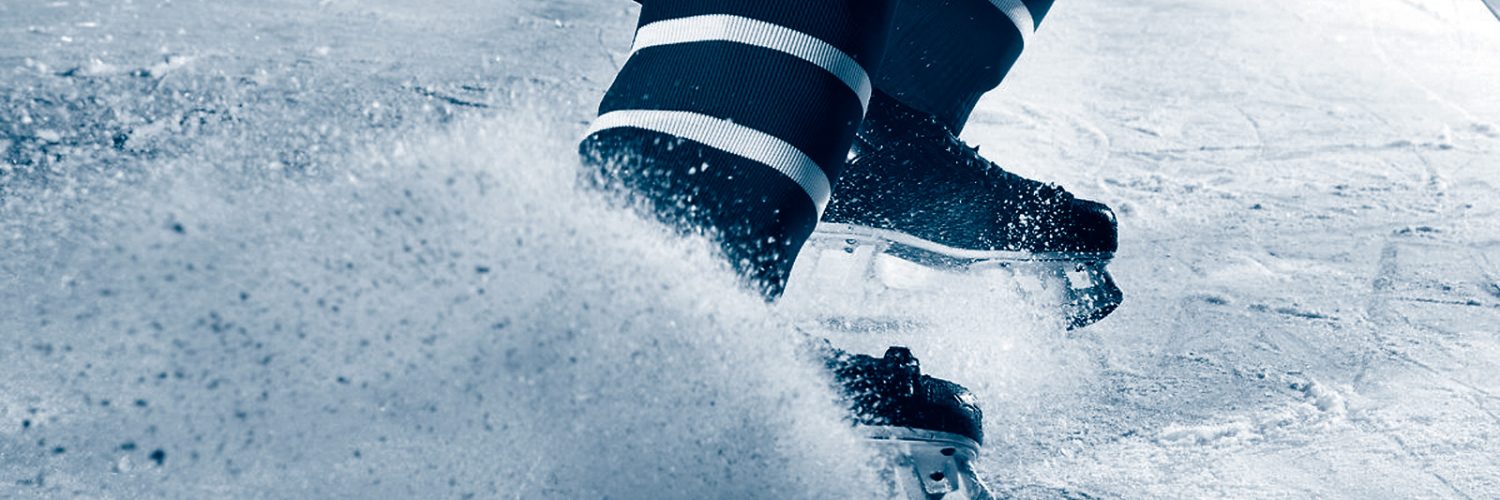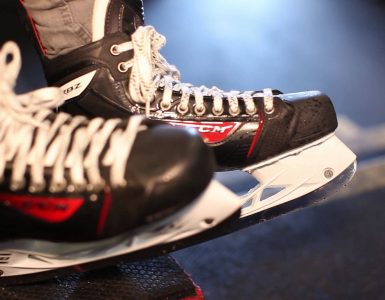No two people’s feet are identical.
Shoe and hockey skate sizes are good – but they only cover the rough dimensions of the foot – and when your feet are the thing that connects you to your skates, rough dimensions aren’t going to deliver the power and responsiveness you need to play to your highest ability.
So, since no two people’s feet are the same – no two people’s skates should be the same.
This is a detailed guide on exactly how you can get your skates to fit your feet perfectly.
Important tip. Get the right skates in the first place
This might seem like an obvious first step, but you’d be amazed at how many experienced people have overlooked it – especially when buying something new or innovative. Check out our CCM and Bauer skate reviews to find the best skates for you.
The lesson here is this:
Try a few skates on before you buy. While breaking a skate in will make it exactly right for your foot, you’re going to need something that’s half-way comfortable first.
Don’t expect to buy a really poorly fitting skate then expect it to transform after a few days skating or a visit to the oven.
If you’re not sure, get your feet measured by someone who knows what they’re doing. In fact, this is a good tip even if you do know what you’re doing – we’ve known a lot of guys have a proper measurement only to be surprised at the result, and then really pleased with how their next skate fits!
When you’ve got something good, it’s time to really start the breaking in…
Method 1. Skate them
Now, you don’t have to start by pulling your new skates on and getting out on the ice, but there’s a whole lot of people out there that’ll tell you there’s just no substitute for tightening those laces and skating to break them in.
There is a chance this method is going to be a bit painful though, skates are way more stiff than even the toughest hiking boots, so you can expect them to rub and make your feet and ankles sore for the first few sessions.
As a rule of thumb, you should start feeling more comfortable by skate number 5 or 6. Oh – and in the meantime, don’t be tempted to skate competitively – like a game isn’t physical enough without painful feet!
Method 2. Bake them
Probably the most popular way of making sure your skates are a perfect fit involves heat – and very possibly your oven.
Now, I’d like to be really clear here – don’t expect a poorly fitting skate to transform by putting it in the oven. Get the skate right first, then, if it’s suitable, warm it up.
If you buy your skates in person from a shop, then you might find they offer to bake your skates for you. If you’re prepped with the right socks (and you’ve got enough time) while you’re in-store, this can be a useful service – not least because they probably do it ten times a day, so they know exactly what they’re doing.
Home baking
Most people who buy skates take them home before they mould them, what follows is a detailed step-by-step on how to do it properly, safely and effectively!
“Why are there skates in my oven?”
A quick note for our younger readers.
If you’re going to bake your skates, you definitely want to get parent’s permission – and, depending on your age, you might want to get them to help. If your parents don’t know much about ice hockey, they might not understand why there’s a pair of expensive skates in the oven!
Are they thermoformable?
Please make sure that your skates can be baked before you go putting them in the oven. Most skates can – but in some instances, carbon composite skates need to be baked in a specific way. Check your manufacturer instructions, otherwise you could damage expensive skates.
Temperature
Heat your oven to around 180 degrees Fahrenheit / 80 degrees Celsius. When it’s up to temperature, shut the heat off – don’t worry, your skates aren’t going to be in there long – and it’ll hold its heat for a good 10-15 minutes with the door closed.
Over temperature gauges are a little vague at times, to get it dead right, put a cup of water in there and measure the temperature of the water with a thermometer.
Prepping the skate
Loosen your laces in the skate so you can pull them on easily when they’re out of the oven – you don’t want to be fumbling around trying to loosen them with a hot skate.
Some people like waxed laces – and while it’s unlikely that you’ve replaced your laces before baking, just make sure you don’t bake waxed laces, the coating can melt and damage your skates.
Take off any blade cover before you put them in the oven, there’s a chance the cover might not respond well to the heat and could melt. Be careful when you’re handling your skates though, the blades can get really hot.
Manufacturers recommendations
Check and double check the temperatures and methods the manufacture recommends. Most will say to put your skates on a baking sheet (so you don’t end up with any strange grooves from the oven shelf) – but sometimes the time and exact temperature will vary.
Cooking directions:
Put the skate (or skates if you’ve got room) in the oven for around 4-5 minutes. Keep your eyes on them – don’t be tempted to do something else and forget about them.
After 4-5 minutes take your skate out of the oven and give them a squeeze. They should be noticeably softer than when they went in. If it’s not, put it back in – but only for around 2-3 minutes – then test again.
Try not to leave the oven door open in between taking them in and out, you don’t want the temperature to drop.
When the cooking’s done
When your skates are oven-fresh, it’s time to slide them on. Put them on over the type of socks you skate in, then tighten the laces.
Make sure your phone is close by, because you’re just going to need to sit still for 20 minutes or so! Don’t be tempted to move or walk around, the boot needs to shape to your foot as-is and moving a lot can damage it.
Equally, make sure you’ve got a little pressure on your foot, so sit with feet flat in your skates with the blades on the floor. The tissues in your feet spread slightly when they’ve got your bodyweight on them, so don’t have your feet elevated and dangling while your boots are cooling.
If you’re hoping to put a bit of additional width into the boot, stand up for that 20 minutes so your foot spreads a little more.
Pumps
Some skates pump up to mould to your foot – and occasionally, you’ll still be able to form these skates with heat for ultimate comfort. If you’ve cooking skates that have got a pump system make sure they’re fully deflated prior to warming – and don’t pump them up again for a further 24 hours after the oven.
Re-heating
Most skates can be heated, then re-heated. 2/3 times without any issues. This is helpful if you find the skate hasn’t quite formed the way that you hope after the first attempt. Make sure they’ve cooled for at least 24 hours before you re-try.
Don’t get in the habit of continually reforming your skates though, they’re only really designed to be formed once – so you may start to impact the padding and the overall structure of them if you do it repeatedly.
If you’ve picked up a pair of used skates, you should be fine to heat them once more to get them to fit your feet nicely.
Cooling
If 24 hours of cooling time feels too long, you might be tempted to speed the process up – especially if you want to skate this evening.
I’d really recommend against putting your skates in the fridge, the freezer – or even outside if it’s cold.
The compounds that make up the thermoformable parts of the skate need to cool slowly and gently – you could make them brittle and liable to breakage if you rush the process. At the very least, check with manufacturers if you plan to do this.
When your 24 hours are done, it’s time to skate…










